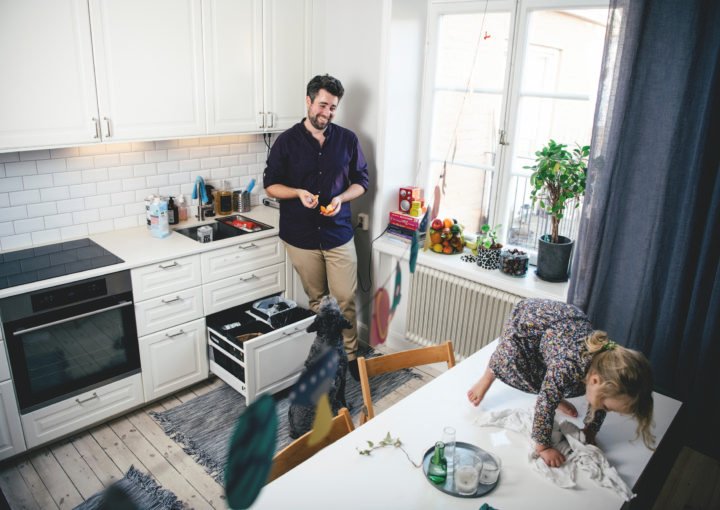Death-cleaning: decluttering the Swedish way
It happens every spring. At least! When winter is over and summer is approaching we all feel the need to declutter, right? From our desk and office to our whole house. And it doesn’t occur only in spring. Every now and then, we feel the urge to get rid of things and start afresh. In most cases, what is missing is the motivation. We want to do it but um, skip it for next autumn or when we will have more spare time (that apparently never comes our way). The Swedes got ya! They have their own way (or mindset maybe?) to declutter their homes.
If doing it for yourself (and your own sanity) won’t work as motivation, then get your loved ones into the game! Would they be happy to have or deal with your stuff when um, you (eventually) pass away? This might sound morbid and sad. But please, read on before you judge. Interestingly, it might shed some light to why you keep things, how you can get away with that and how you can use “death-cleaning” to your benefit, whether you are young or old.

What is “death-cleaning”?
First things first, let’s define what this concept is. It is actually a way of decluttering your home and get rid of things that you believe will not be of any value to your beloved ones. Contrary to the modern Japanese decluttering preaches of “keeping only what brings you joy”, death-cleaning focuses not on your thoughts and feelings but on your beloved ones’. After all, when you are gone, they will have to deal with all the stuff you had so relentlessly kept as sacred. Why give them such a burden? So, we should all be thinking of the day when we will be gone from this world? Of course not. This concept can act as a mindset to guide you through the hassle of what to do with things you possess. It can even help you make better purchase decisions in the future.
Keep reading for more about this concept and how you can benefit!
 |
Is it only for old people?
Of course not. Well, listen! If it is about your grandmother, yes maybe this concept can help her declutter her house more efficiently. What happens when you are young? It can still help you, although you may not have children to think of when deciding what to keep and what to get rid of. Either way, Swedish death-cleaning can help people of all age become more aware of their relationship with physical objects.
Your death-cleaning checklist
There are two major decisions to make with every piece you come across while decluttering:
– do you still need it? If yes, keep it but be true and honest with the answer.
– will any of your beloved ones need it, now or when you are gone? If yes, it must be someone specific not generally someone from your family. If it is not specific, do a favour to yourself and get rid of it. Most probably it will not be of any value to anyone!
OK, now you are ready for the practical stuff:
-start off early on. You will need a lot of time to do all the decluttering. It is not going to be one evening. If necessary, schedule sessions.
– begin with places other than your bedroom. It is a good idea to search inside furniture or areas near the entrance. You can’t imagine what people stuff there. Basements and attics are also OK to start with.
– don’t start with photos and letters. They can get you very emotional and stop you from moving on fast. Leave them for the end. Clothes, books and other everyday stuff are better to start with.
– organize. When you set off to declutter a room, take all things out and group them into categories. This is extra helpful for quick decisions.
– make two piles. The “keep it” pile and the “goodbye” pile. Sorry, not an in-between category. You either keep something or get rid of it (for ways to do it, skip to the end of this story).
– keep the memories. Most of the things you might need to get rid of have emotional value and are associated with memories. Cherish these memories and keep them in your heart, before giving something away.

What to do next?
By now, you should have been left with much much less stuff, right? If not, do it all over again. The next step is to act on the “goodbye” pile. You got many options:
– ask your family and friends if they want some of them. If you are a social animal, organize an event at home to give away things.
– donate to charity organizations or people you know are in need. If necessary, do the neede repairing beforehand.
– recycle. Throwing stuff into the garbage is a no-no. Circular economy rules!
How can you benefit from all this?
Needless to say that you get a cleaner and more tidy home. Hey, not only with what is visible but also with what lies in any storage space around the house. Stuffing things into bins and boxes, wishing they could vanish into a black hole, is no longer an option. It doesn’t have to be one. You give your possessions a second (or third or fourth and so on) life by giving them to people who would cherish them. You keep your life memories alive. Plus, you also become more conscious when it comes to buying new things. Do you really need them? Or will they soon have to go to another “goodbye” pile?
Image: Margareta Bloom Sandebäck/imagebank.sweden.se

